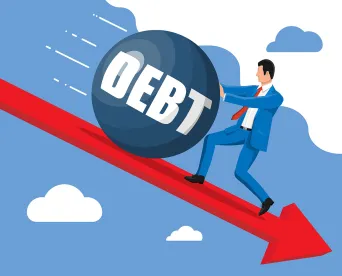Last month, the United States Court of Appeals for the Second Circuit, in Homaidan v. Sallie Mae, Inc., 3 F.4th 595 (2d Cir. 2021), affirmed a New York federal court's ruling that private student loans are not explicitly exempt from the discharge in a chapter 7 bankruptcy, opening the door for more borrowers seeking to obtain relief from educational debt.
In the ruling the Second Circuit sided with an Emerson College alumnus who sought to eliminate through bankruptcy the $12,567 in private student loans he took on to finance his education. Government-backed student loans are nearly impossible to erase in bankruptcy. To qualify, borrowers must show that continuing to repay would impose an “undue hardship,” a standard so high that few even attempt to meet it. This student’s lender, Navient Solutions LLC, argued that his private loans should be treated the same way. But the Second Circuit disagreed, saying that certain types of private educational loans can be canceled through the bankruptcy process without a showing of undue hardship.
In the opinion authored by U.S. Circuit Court Judge Dennis Jacobs, the three-judge panel decided that Section 523(a)(8) of the U.S. Bankruptcy Code does not provide a blanket exception to the applicability of a bankruptcy discharge to private loans given to student borrowers.
Subsection A(ii) of Section 523(a)(8) allows an "obligation to repay funds received as an educational benefit, scholarship, or stipend" to be excepted from the discharge, and Navient argued in the lower court proceedings that this covered the private student loans given to the debtor here.
According to the court, interpreting subsection A(ii) to apply to the loans provided by Navient would result in just about all types of student loans being exempt from a bankruptcy discharge: "Under Navient's reading of that provision, the term 'educational benefit' would encompass virtually all private student loans," "But that reading cannot be reconciled with the text and structure of Section 523(a)(8), both of which confirm that Section 523(a)(8)(A)(ii) excepts from discharge a far narrower category of debt."
In its analysis, the appellate panel looked only to the text of the code in determining whether the Navient's loans to the debtor were covered by the relevant code sections. It determined that only three types of loans are exempt from the discharge: loans and benefit overpayments backed by the government or a nonprofit; obligations to repay funds received as an educational benefit, scholarship, or stipend; and qualified private educational loans.
Navient argued its loans are covered by the second exemption criteria, specifically as an educational benefit. But the court determined that if Congress had intended that passage to cover private student loans, it would have said so more explicitly in adopting the language of the code section:
[I]f Congress had intended to except all educational loans from discharge under Section 523(a)(8)(A)(ii), it would not have done so in such stilted terms … There are educational benefits that students may become obligated to repay — such as conditional grants — which fit the statutory text more naturally.
The Second Circuit’s ruling joins the ranks of at least two other circuit court opinions — from the Fifth and Tenth Circuits — reaching this conclusion. See In re Crocker, 941 F.3d 206 (5th Cir. 2019), as revised (Oct. 22, 2019) (holding that the term “educational benefit,” as used in dischargeability exception, drew meaning from terms around it and could not be interpreted so broadly as to include private educational loan); In re McDaniel, 973 F.3d 1083, 1086 (10th Cir. 2020) (same).
As a result, using these decisions to support their position, more and more borrowers may attempt to discharge private student loans through bankruptcy cases.




 />i
/>i

